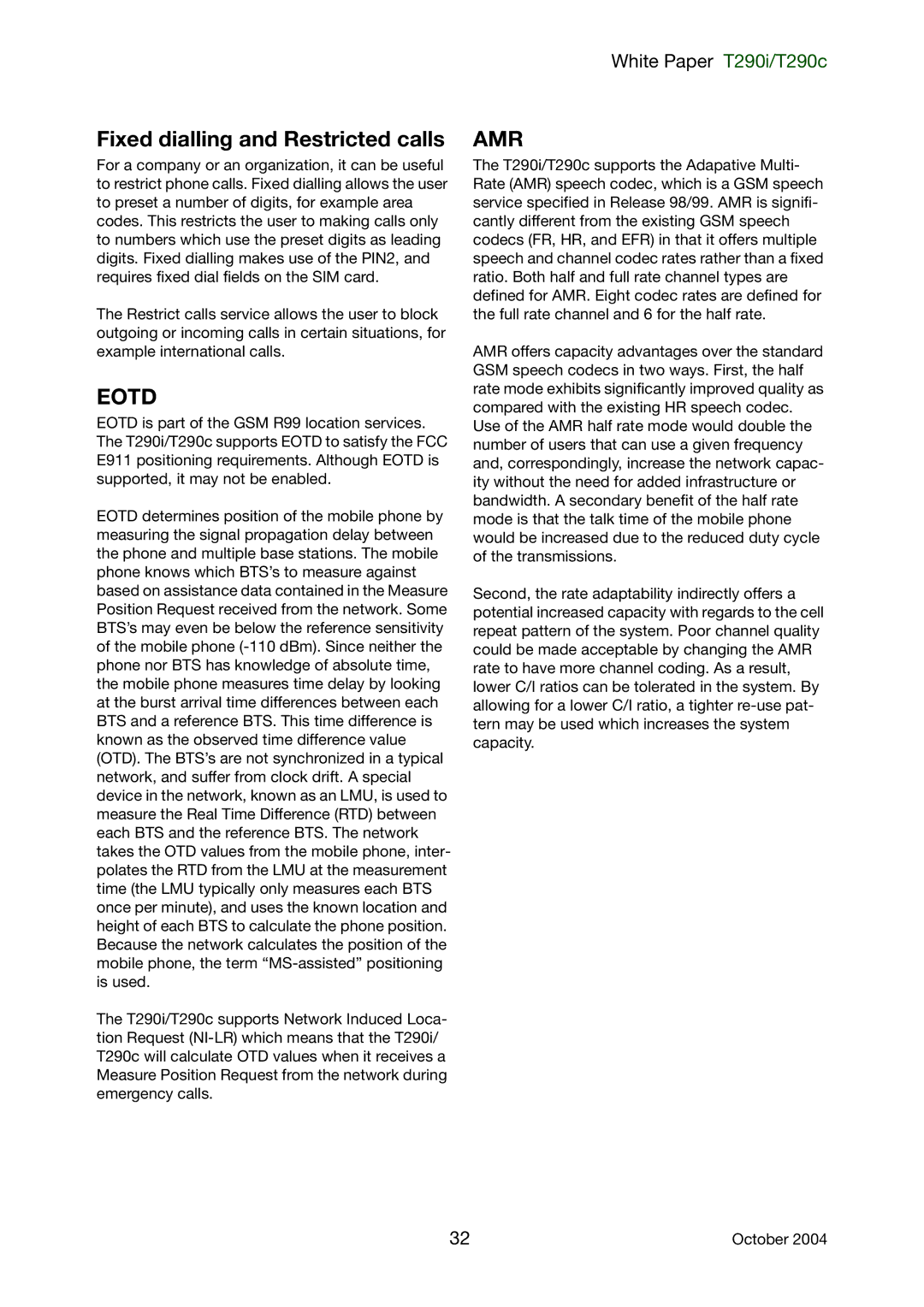Fixed dialling and Restricted calls
For a company or an organization, it can be useful to restrict phone calls. Fixed dialling allows the user to preset a number of digits, for example area codes. This restricts the user to making calls only to numbers which use the preset digits as leading digits. Fixed dialling makes use of the PIN2, and requires fixed dial fields on the SIM card.
The Restrict calls service allows the user to block outgoing or incoming calls in certain situations, for example international calls.
EOTD
EOTD is part of the GSM R99 location services. The T290i/T290c supports EOTD to satisfy the FCC E911 positioning requirements. Although EOTD is supported, it may not be enabled.
EOTD determines position of the mobile phone by measuring the signal propagation delay between the phone and multiple base stations. The mobile phone knows which BTS’s to measure against based on assistance data contained in the Measure Position Request received from the network. Some BTS’s may even be below the reference sensitivity of the mobile phone
The T290i/T290c supports Network Induced Loca- tion Request
White Paper T290i/T290c
AMR
The T290i/T290c supports the Adapative Multi- Rate (AMR) speech codec, which is a GSM speech service specified in Release 98/99. AMR is signifi- cantly different from the existing GSM speech codecs (FR, HR, and EFR) in that it offers multiple speech and channel codec rates rather than a fixed ratio. Both half and full rate channel types are defined for AMR. Eight codec rates are defined for the full rate channel and 6 for the half rate.
AMR offers capacity advantages over the standard GSM speech codecs in two ways. First, the half rate mode exhibits significantly improved quality as compared with the existing HR speech codec. Use of the AMR half rate mode would double the number of users that can use a given frequency and, correspondingly, increase the network capac- ity without the need for added infrastructure or bandwidth. A secondary benefit of the half rate mode is that the talk time of the mobile phone would be increased due to the reduced duty cycle of the transmissions.
Second, the rate adaptability indirectly offers a potential increased capacity with regards to the cell repeat pattern of the system. Poor channel quality could be made acceptable by changing the AMR rate to have more channel coding. As a result, lower C/I ratios can be tolerated in the system. By allowing for a lower C/I ratio, a tighter
32 | October 2004 |
